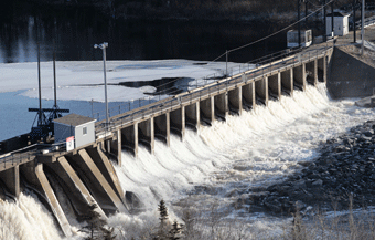Canada’s Ocean Supercluster – a “cluster model” of investment that pools member money to advance ocean-based technology – and multiple Canada-based electric companies are investing CAD 10.5 million (USD 7.7 million, EUR 7.3 million) in AI fish monitoring technology.
The investment is aimed at advancing AI fish monitoring technology and fish tracking so that power companies can maximize energy production an hydropower facilities while safeguarding fish species. Canada’s Ocean Supercluster is contributing CAD 5 million (USD 3.6 million, EUR 3.4 million) to the project, with the remaining funding sourced from the Fundy Ocean Research Centre for Energy, BigMoon Power, Nova Scotia Power Inc., New Brunswick Power Corporation, and Deepsense.
The research project is being led by Innovasea, Boston, Massachusetts, U.S.A.-based company developing tech solutions for aquaculture and fish tracking. The company recently added AI biomass estimation to its suite of Atlantic salmon farming tools, and has been working on developing biomass cameras that allow advanced fish tracking in net pens.
Now, that same technology from aquaculture will be used to help track wild fish populations to avoid conflicts at hydropower turbine sites.
“The HydroAware project is going to build upon the significant advancements Innovasea has made with tagless fish detection technology over the last few years while working with many of the same partners,” Innovasea President Mark Jollymore said. “That technology is giving hydropower producers better, real-time data on fish activity in and around their infrastructure today to help meet the dual mandate of protecting wildlife and improving operations.”
Hydropower companies in Canada must comply with the Fisheries Act and Species at Risk Act, which requires safeguards to protect fish populations from harm. Research has shown that hydroelectric power plants can take a heavy toll on wild fish populations moving downstream – including commercially viable species like salmon.
An AI-powered monitoring solution could allow hydroelectric power plant operators to continue operating by detecting any potential conflicts with wild fish populations quickly. For efforts to pilot tidal energy by the Fundy Ocean Research Centre for Energy, ensuring wild fish safety is paramount.
“Tidal energy can help us meet our clean energy targets, contribute to our economy, and reduce reliance on imported energy. HydroAware will help us unlock that potential by improving our understanding of how fish and tidal devices interact with each other, and ensuring the safeguarding of our marine ecosystems,” the center said.
The project follows on the heels of the 2021 launch of the cluster's “Integrated Operations and Real-Time Analytics Project,” a CAD 27 million (USD 21 million, EUR 17 million) endeavor.
Photo courtesy of the Government of Nova Scotia







